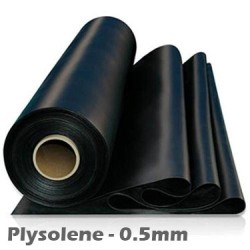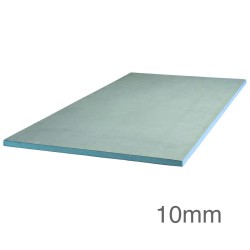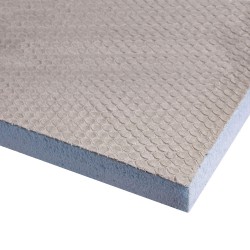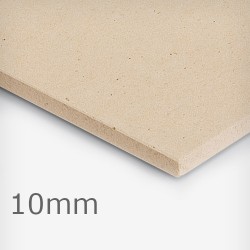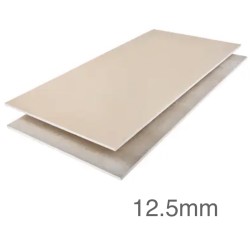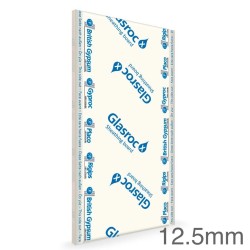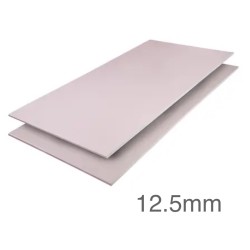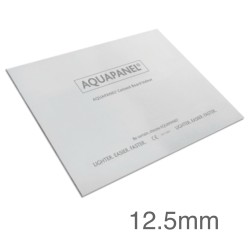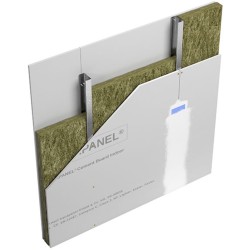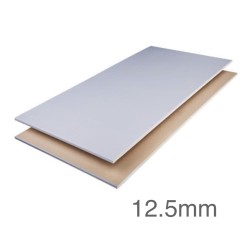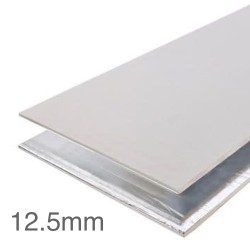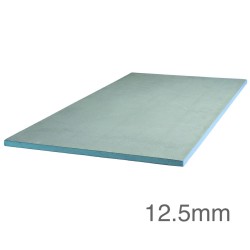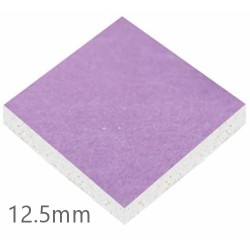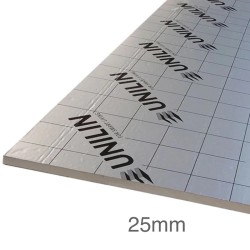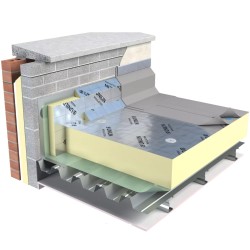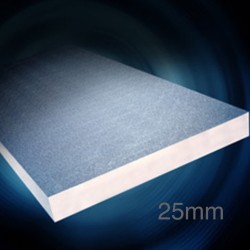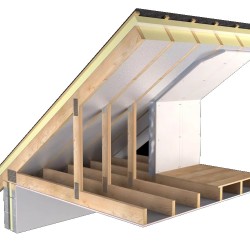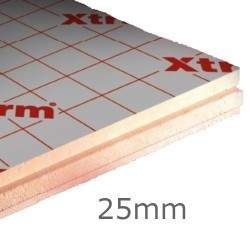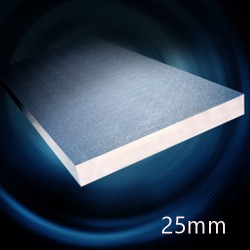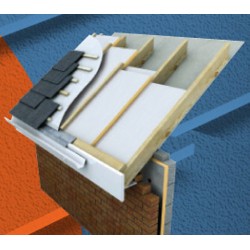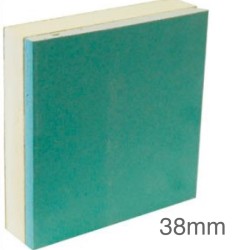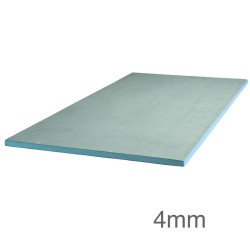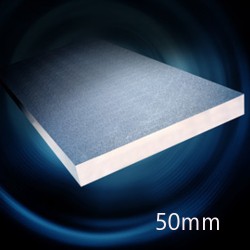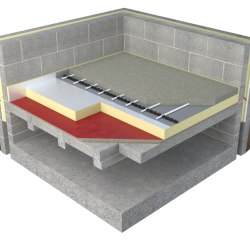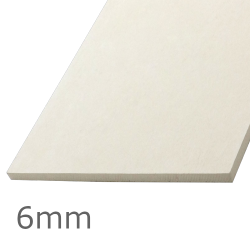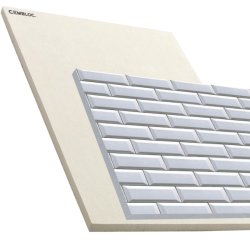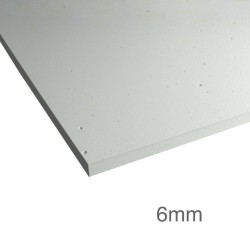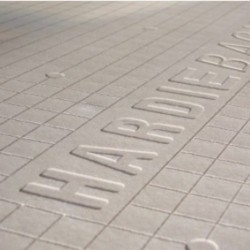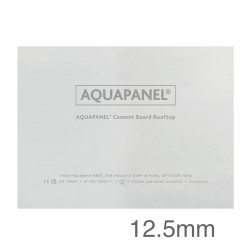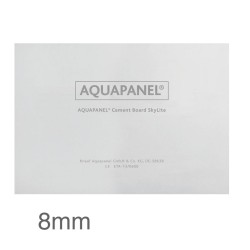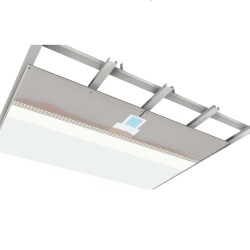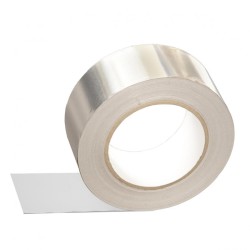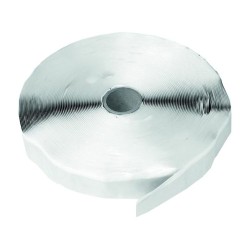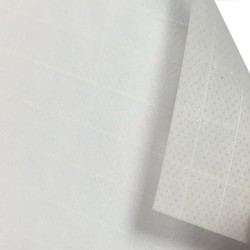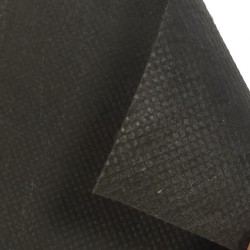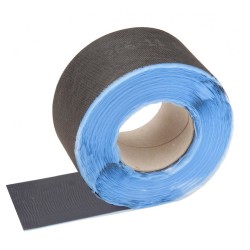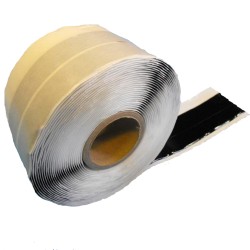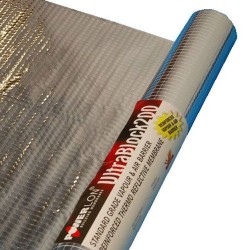Moisture Resistant Insulation
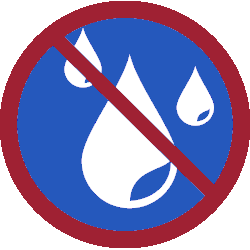
Resistance to moisture combined with the ability of the total component to dry is an important consideration. The moisture resistant insulation come in the form of polystyrene boards, EPS and XPS, Calcium Silicate boards, Composite boards with moisture protective sheathing, Gypsum boards with glass fibre and additives and thermoplastic sheathing.
Everyday activities such as cooking, washing and bathing add moisture to the air in your home in the form of water vapour. This vapour can become trapped inside walls, resulting in mould and mildew growth, which can damage your home and present a potential health concern. Insulation provides a barrier between vapour and structure.
Types of Moisture-Resistant Insulation
- Foam or closed-cell rigid insulation--extruded polystyrene or polyisocyanurate--is not damaged by water and resists surface mould growth. This kind of insulation generally allows the walls and floors to drain and dry.
- Fibreglass insulation resists water damage and surface mould growth, however, this type of insulation may trap and hold water and slow drying time of walls and floors. Soaked fibreglass insulation usually has to be removed.
- Fibre reinforced calcium silicate board with water repellent silicone applied on both faces.
- Reinforced with glass fibre gypsum board with the glass fibre tissue immediately below each surface of the board. Also Gypsum plasterboard with an aerated gypsum core with water repellent additives encased in and firmly bonded strong paper liners.
- Cement based boards with cellulose, sand and selected water repellent additives.
- Laminated boards with an aerated gypsum core and PIR insulation lined with multi-layer vapour control barrier on both sides.
- Laminated XPS foam with a polymer-concrete coating on both sides and reinforced with a fibreglass mesh encased by carbon nano-fibres.
Installation
You can install moisture resistant insulation boards just like you you install standard drywall boards.
- Cut the pieces to size using a sharp utility knife and a metal straight-edge. Simply secure the straight-edge in place and score through the outer coating using a sharp blade. Once the paper is scored you can snap the board off changing its overall size to what you need.
- Drive the fixing screws into the board and the studs behind it or to the battens fixed on to the solid substrate. Take care to only go just below the surface of the board and try to avoid going through the paper facing entirely.
- If you have to go with multiple rows of board on a wall, stagger the material to keep seams from lining up.
- Avoid putting water resistant drywall on your bathroom ceiling, as bathroom ceilings tend to collect a great deal of moisture.
- Tape the joints and plaster them.
- You can then install tiles on the boards or just finish them with plaster and paint.
CHOOSE MANUFACTURERS
Brand: Plysolene
Model and Size: 1x25m - 25m2
Delivery Time: 2 - 4 days
0.5mm Plysolene PIB Thermoplastic Sheeting is one of the top selling products in the UK with over 40 years long tradition in power stations, oil refineries, airports and chemical works. It is specially designed to provide waterproof wrapping for pipe work and ventilation duct work, manufacture..
Guide Price: £228.24
£273.89 inc VAT
Brand: Marmox
Model and Size: 2400mm x 600mm - 108m2
Delivery Time: 2 - 3 working days
10mm Marmox Multiboard Waterproof Insulation Board is a highly versatile, BBA-certified construction board designed for a multitude of applications, combining superior water resistance, thermal insulation, and structural strength. Manufactured from XPS (extruded polystyrene) foam, which is then rein..
£1,155.75
£1,386.90 inc VAT
Brand: Siniat
Model and Size: 2400x1200mm - 2.88.m2
Delivery Time: 2 - 4 days
Siniat BluClad is a medium density fibre reinforced calcium silicate board which has been formulated without inorganic fibre. Available in a standard 10mm thickness, it is off-white in colour and has a smooth surface on the front face and textured on the reverse. The smooth face is for painting and ..
Guide Price: £85.21
£102.25 inc VAT
Brand: British Gypsum
Model and Size: 1200x2400 - 2.88m2
Delivery Time: 1 - 2 days
12.5mm Glasroc H TILEBACKER is a high performance board specifically designed for use in wet areas such as bathrooms and kitchens. High levels of moisture and mould resistance, combined with superior dimensional stability make it the high performance alternative to plywood and cement boards reducing..
Guide Price: £62.33
£74.80 inc VAT
Brand: British Gypsum
Model and Size: 1200x2400 - 2.88m2
Delivery Time: 1 - 2 days
12.5mm Glasroc X Sheathing Board is a high performance sheathing board that gives BBA certified 6 months weather protection. These boards are used to provide temporary weather protection for structural frame steel constructions, where the facade cladding system is fixed through it into the steel stu..
Guide Price: £41.10
£49.32 inc VAT
Brand: British Gypsum
Model and Size: 1200x3000mm - 3.60m2
Delivery Time: 2 - 3 working days
12.5mm Gyproc FireLine MR with water repellent additives in its core is used in British Gypsum wall lining and partition systems where both fire protection and moisture resistance are required. Also used for protection to structural steel. Plasterboard linings provide good fire p..
Guide Price: £26.36
£31.63 inc VAT
Brand: Knauf
Model and Size: 900x1200mm - 1.08m2
Delivery Time: 2 - 4 days
12.5mm Knauf Aquapanel Interior Cement Board is a high-performance, water-resistant building panel designed for interior applications. It is composed of a core of aggregated Portland cement, reinforced with alkali-resistant glass fibres. This construction provides excellent dimensional stability, im..
Guide Price: £33.64
£40.37 inc VAT
Brand: Knauf
Model and Size: 1200mm x 2400mm - 2.88m2
Delivery Time: 1 - 2 days
12.5mm Knauf Performance Plus is a high-performance multi-use plasterboard featuring a distinctive grey face and a high-density core enriched with performance-enhancing ingredients. This innovative plasterboard is designed to provide superior levels of sound, moisture, fire, and impact resistance, m..
Guide Price: £29.99
£35.99 inc VAT
Brand: Knauf
Model and Size: 1200mm x 2400mm - 2.88m2
Delivery Time: 1 - 2 days
12.5mm Knauf Vapour Panel is a high-performance plasterboard featuring a metallised polyester foil that creates an effective vapour barrier, significantly limiting moisture diffusion. This makes it an ideal solution for lining the internal side of external walls, as well as the underside of roofs an..
£22.68
£27.22 inc VAT
Brand: Marmox
Model and Size: 2400mm x 1200mm - 115.20m2
Delivery Time: 2 - 3 working days
12.5mm Marmox Multiboard Waterproof Insulation Board is a highly versatile, BBA-certified construction board designed for a multitude of applications, combining superior water resistance, thermal insulation, and structural strength. Manufactured from XPS (extruded polystyrene) foam, which is then re..
£1,465.56
£1,758.67 inc VAT
Brand: Siniat
Model and Size: 2400x1200 - 2.88m2
Delivery Time: 2 - 4 days
12.5mm Siniat GTEC Weather Defence External Sheathing Board is a strong, highly moisture resistant and non combustible external sheathing board, faced with water repellent material for superior weather protection. Thermal insulation can be installed within the frame, mechanically and/or a..
Guide Price: £52.50
£63.00 inc VAT
Brand: Unilin (prev. Xtratherm)
Model and Size: 2400x1200mm - 34.56m2
Delivery Time: 1-3 working days
25mm Unilin Thin-R FR/ALU Flat Roof PIR Insulation Board is a flat roof insulation with enhanced vapour resistant performance. Unilin Thin-R FR/ALU board is faced with low emissivity aluminium facings both sides. Rot proof and will remain effective for the life span of the building. Unilin Thin-R FR..
Brand: Unilin (prev. Xtratherm)
Model and Size: 1200x2400mm - 34.56m2
Delivery Time: 1-3 working days
25mm Unilin XtroLiner XO/PR board has a core of modified polyisocyanurate (PIR) bonded to low emissivity textured aluminium foil facings. Unilin XtroLiner XO/PR board offers excellent insulation performance with excellent thermal conductivity. Unilin XtroLiner XO/PR is CFC & HCFC free and is man..
Brand: Xtratherm
Model and Size: 2400x1200mm - 34.56m2
Delivery Time: 1-3 working days
25mm Xtratherm Thin-R FR/ALU Flat Roof PIR Insulation Board is a flat roof insulation with enhanced vapour resistant performance. Thin-R FR/ALU board is faced with low emissivity aluminium facings both sides. Rot proof and will remain effective for the life span of the building. Suitable for use bel..
Brand: Xtratherm
Model and Size: 1200x2400mm - 34.56m2
Delivery Time: 1-3 working days
25mm XtroLiner XO/PR board has a core of modified polyisocyanurate (PIR) bonded to low emissivity textured aluminium foil facings. It offers excellent insulation performance with thermal conductivity of 0.021 W/mK and a Class ‘O’ fire rating. XtroLiner XO/PR is CFC & HCFC free and is manufacture..
Brand: British Gypsum
Model and Size: PIR MR - 38mm
Delivery Time: 1 - 5 working days
38mm Gyproc Thermaline PIR MR Insulated Plasterboard consists of a 12.5mm Gyproc Moisture Resistant Board factory bonded to a 25.5mm rigid polyisocyanurate foam (PIR) with a multi-layer Kraft/aluminium facer on both sides of the insulation board and conforms to BS EN 13950. ..
Guide Price: £103.05
£123.66 inc VAT
Brand: Marmox
Model and Size: 1200mm x 600mm - 7.20m2
Delivery Time: 2 - 3 working days
4mm Marmox Multiboard Waterproof Insulation Board is a highly versatile, BBA-certified construction board designed for a multitude of applications, combining superior water resistance, thermal insulation, and structural strength. Manufactured from XPS (extruded polystyrene) foam, which is then reinf..
£80.76
£96.91 inc VAT
Brand: Unilin (prev. Xtratherm)
Model and Size: 1200x2400mm - 17.28m2
Delivery Time: 1-3 working days
50mm Unilin XtroLiner XO/UF board has a core of modified polyisocyanurate (PIR) bonded to low emissivity textured aluminium foil facings and prevents downward heat loss through floors. Unilin XtroLiner XO/UF board offers excellent insulation performance with excellent thermal conductivity. Unil..
Brand: Cembloc
Model and Size: 1200mm x 600mm - 0.72m2
Delivery Time: 2 - 3 working days
6mm Cembloc CemBacker is a high performance high performance fibre cement tile backer building board used to provide provide fireproof and waterproof protection for floors in tiled rooms. This rigid fibre cement board offers great strength and stability with the workability of wood. It can be cut, d..
Brand: British Gypsum
Model and Size: 2400x1200mm - 2.88.m2
Delivery Time: 2 - 3 working days
6mm Glasroc F MultiBoard is a highly versatile, Class 0, non-combustible glass reinforced gypsum board manufactured by a unique continuous process, developed and patented by British Gypsum. The non-combustibility of gypsum and the reinforcement of glass fibre combine to produce a strong and resilien..
Guide Price: £40.35
£48.42 inc VAT
Brand: James Hardie
Model and Size: 1200mm x 800mm - 0.96m2
Delivery Time: 2 - 4 days
6mm Hardiebacker 250 is backboard used as an ideal substrate for vinyl, natural stone and ceramic tiles, especially designed for floors and countertops. It can be used even for masonry walls, able to withstand loads of up to 100kg/m2. It consists of cement, cellulose, sand and selected additives, bu..
Guide Price: £12.97
£15.56 inc VAT
Brand: Knauf
Model and Size: 900mm x 1200mm - 1.08m2
Delivery Time: 5 - 7 days
6mm x 900mm x 1200mm Knauf Rooftop Aquapanel Cement Board is an extremely durable construction board highly resistant to moisture, mould and mildew growth. It can be used as a cover board above the insulation and as a substrate to take on the waterproofing layer. Knauf Aquapanel Cement Board Rooftop..
£40.88
£49.06 inc VAT
Brand: Knauf
Model and Size: 900mm x 1200mm - 1.08m2
Delivery Time: 2 - 3 weeks
8mm Knauf Aquapanel Cement Board SkyLite is an extremely durable ceiling board that can be used in wet indoor areas such as bathrooms, shower rooms and wet rooms as well as some exterior soffits, dependent on specification. Knauf Aquapanel Skylite is resistant to mould and mildew and doesn't get wet..
Guide Price: £27.13
£32.56 inc VAT
Brand: Powerlon
Model and Size: 50mm x 47.5m
Delivery Time: 2 - 3 working days
Powerbond Aluminium FR VCL Tape - 50mm x 47.5m Roll is a high-performance aluminium flame-retardant tape designed for use with Powerlon Ultrablock vapour control layers. The thermo-reflective tape will seal any gaps and laps and would contribute to the performance of the VCL.CHARACTERISTICSTechnical..
Guide Price: £7.64
£9.17 inc VAT
Brand: Powerlon
Model and Size: 2mm x 15mm x 24m
Delivery Time: 2 - 3 working days
Powerbond Double-Sided Butyl Tape - 2mm x 15mm x 24m Roll is a high-performance sealing tape used to provide effective air, vapour and watertight joins for Powerlon Membranes.CHARACTERISTICSTechnically advanced,Double-sided tape,Seals Powerlon VCLs, Self-adhesive.APPLICATIONUsed for jointing and ove..
Guide Price: £7.99
£9.59 inc VAT
Brand: Powerlon
Model and Size: 1.5m x 50m - 75m2
Delivery Time: 2 - 3 working days
Powerlon Air Barrier Membrane - 1.5m x 50m roll is a high-performance non-woven 112gsm membrane that will increase energy efficiency as it improves the air tightness in the building. This membrane is CE marked and certified for use in roofs, walls and floors. Powerlon Air Barrier is made from reinfo..
Guide Price: £84.88
£101.86 inc VAT
Brand: Powerlon
Model and Size: 1.5m x 50m - 75m2
Delivery Time: 2 - 4 days
Powerlon UV 120 Membrane is a high-performance breathable water repellant UV resistant membrane for installations behind open or closed ventilated rainscreens and facade on walls. Made of polyacrylic and co-polymer materials, Powerlon UV 120 gives superior durability. The sun emits ultraviolet (UV) ..
Guide Price: £144.10
£172.92 inc VAT
Brand: Powerlon
Model and Size: 60mm x 25m
Delivery Time: 2 - 3 working days
Powerlon UV Facade Tape - 60mm x 25m Roll is a high-performance facade tape that is technically advanced engineered with high UV resistance. It is highly UV resistant adhesive tape effectively joins Powerlon UV 120 and UV 160 membranes air and watertight.Note: Tapes should be kept free of moisture a..
Guide Price: £19.64
£23.57 inc VAT
Brand: Powerlon
Model and Size: 10m x 50mm
Delivery Time: 2 - 3 working days
Powerlon UV Nail Sealing Tape - 50mm x 10m Roll is a high-performance UV resistant double-sided tape to secure adhesive seal over nails and screws. Used with Powerlon UV 160 SA and UV 120 roof membranes. CHARACTERISTICSTechnically advanced,Double-sided,Seals any punctures made by nails/screws, Self-..
Guide Price: £7.32
£8.78 inc VAT
Brand: Powerlon
Model and Size: 1.6m x 50m - 80m2
Delivery Time: 2 - 3 working days
Powerlon UltraBlock 200 - 1.6m x 50m roll is a high-performance reinforced polyethylene vapour control layer with a thermo-reflective layer which helps with the insulation of the building. These 104gsm thermo-reflective reinforced vapour control layers maximise energy efficiency of the building. The..
Guide Price: £75.19
£90.23 inc VAT


































































































































